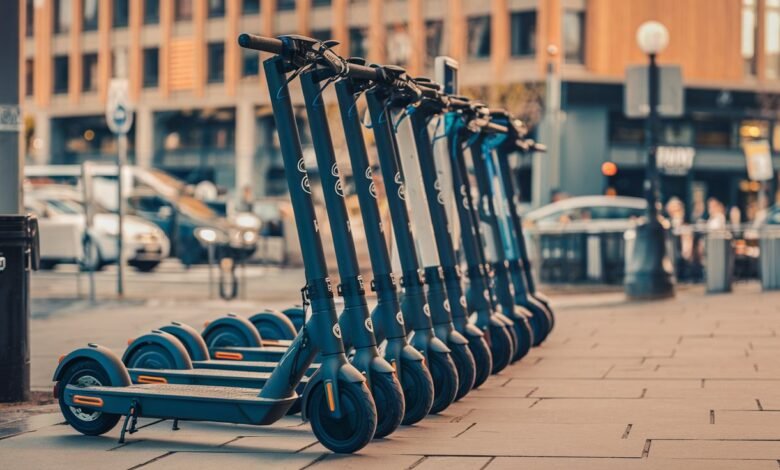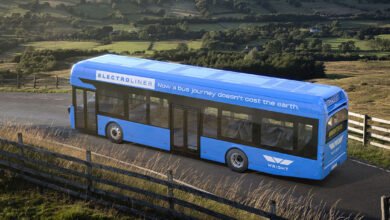Electric Scooters: The Future of Urban Transport? A Deep Dive into the World of E-Scooters
By CybaPlug.net Editorial Team

Introduction: The E-Scooter Revolution
Electric scooters-or e-scooters-are fast becoming the symbol of innovative urban mobility. What was earlier perceived as a quirky gadget for early adopters has now secured its place in cities worldwide. With growing concerns over urban congestion, environmental sustainability, and an increase in transportation costs, e-scooters have emerged to provide solutions to the modern city’s greatest ills.
In this article, we delve deep into electric scooters as a mode of transport, considering their rise in popularity, the benefits, technological advancement, challenges, and future potential. Whether you are an e-scooter rider, a curious observer, or a city planner considering how to integrate e-scooters into urban transportation systems, this comprehensive analysis brings all that one needs to know within a single narrative.
The Rise of Electric Scooters: A New Form of Mobility
The idea of electric scooters is not all that new; using them as a greatly utilized means of transportation is. The main stream of e-scooters started in the 2010s with companies like Bird and Lime, introducing dockless escooter sharing services in most major cities around the world. Being able to rent a scooter via smartphone application and drop it off almost anywhere greatly revolutionized short-distance travel, at least in more congested urban environments.
In the last couple of years, the electric scooter market has boomed. Estimates show that by 2030, the global e-scooter sharing market could reach a value of over $50 billion. These driving forces are coming through increasing demand for greener options of last-mile travel, urbanization, and affordable options to car travel in densely populated cities.
Types of Electric Scooters
Electric scooters are available in several forms based on the requirement of the users.
While docked scooters require users to pick up and drop off at certain stations, much like traditional bike-sharing systems, the convenience of dockless scooters, which users can pick up and drop off anywhere within an area, have grown more popular.
Shared or Owned? While many people love the convenience of shared scooters through Bird, Lime, or Spin, among others, other riders like having their e-scooters. Personal scooters-stronger and much more durable compared to their shared counterparts-have grown to be a doable alternative for daily commuters in need of an effective, cheap transport solution.
Technology Behind E-Scooters
E-scooters are powered by lithium-ion batteries-one of the most efficient and cost-effective ways to store energy developed over the last ten years. Most scooters boast ranges from 10 to 30 miles on a single charge, depending on usage, terrain, and rider weight. Charging times for these batteries run 3 to 5 hours.
Most modern e-scooters boast high-value features that include but are not limited to LED headlights and taillights, electric or mechanical disc brakes, and even suspension systems on occasions for added smoothing of the ride. Besides, smart technology is increasingly integrated, with GPS tracking for fleet management, anti-theft systems, and smartphone apps that allow users to control locking, unlocking, and tracking of ride history.
Environmental Impact: Just How Green Are Electric Scooters?
Probably the most significant single benefit of e-scooters is the potential they provide for reducing emissions. Given that they have zero direct tailpipe emissions, electric scooters present a cleaner alternative to the conventional gas-powered vehicle fleet. They are really good in replacing the number of short car trips that account for the huge proportion taken by urban emissions.
The overall ecological footprint of e-scooters, however, reaches far beyond their immediate use: to production and the problem of waste disposal from lithium-ion batteries, further to the rather short life of shared scooters that can serve no more than 1-2 years in the fleet, hence arising sustainability concerns. Increasing the robustness and recyclability of the scooters will be crucial to maximizing the long-term environmental benefits of the scooters.
It comes to the promise that e-scooters have shown in relation to reducing congestion. According to studies, many scooter trips replace short car journeys, which help reduce congestion in city centres and, as a result, improve air quality. Yet other critics say some e-scooter trips may replace walking or biking, even more eco-friendly alternatives.
E-Scooters: A Solution to Last-Mile Transportation
The most important role that e-scooters can play in urban transport systems is last-mile transportation. For a lot of commuters, short-distance travel from transit hubs, like bus stops or train stations, to home or the office is a common problem. This is where e-scooters excel: too far to use for walking and too short to use a car or public transport for, e-scooters provide an efficient, flexible solution.
That’s part of a greater trend in micromobility also inclusive of e-bikes and classic bicycles. These light, personal modes of mobility purport to fill the gaps in urban transportation systems, reducing car use, alleviating parking demand, and helping cities in their efforts to stem congestion.
Economic Impact: A Win for Riders, Cities, and Businesses?
Electric scooters are a somewhat inexpensive option for consumers. For rental services, usage is billed per minute; a rough estimate is a $0.15 to $0.30 base charge per minute, with a small fee to unlock the scooter. For those who use them frequently, buying a personal scooter is cheaper – ranging from roughly $300 on the low end to $1,500 at the high end.
E-scooters have also become a lucrative business. In total, companies like Bird and Lime have raised billions of dollars in venture capital, with their industry continuing to expand into new markets. Reciprocally, the industry of e-scooters created jobs in fleet maintenance-related industries, software development, and logistics.
From a city’s perspective, however, costs also tend to weigh against the benefits accrued. While e-scooters reduce congestion and pollution, on the other side of the coin, they do bring issues related to street clutter, infrastructure maintenance-scooter lanes being an example-and regulation.
Challenges Facing E-Scooters
Despite all its many advantages, e-scooters do face a few challenges:
Safety Concerns: The rise in the adoption of e-scooters has brought an increase in accidents, sometimes with serious injuries and even fatalities. Many riders forgo helmets, and the risks inherent in riding in crowded urban environments sans safety make e-scooter safety top of the agenda. In return, some cities have promulgated rules related to the use of helmets, speed limits, and the use of bike lanes.
Regulation and Compliance: E-scooters have popped up in cities around the world, often faster than regulators can keep pace with. Many struggle to balance the building demand for this mode of sustainable transportation with safety, parking, and pedestrian concerns. Cities like Paris and San Francisco have issued partial or full permits-the former introduced a law that limits the number of scooters allowed on city streets to 400 for each of three licensed operators, while the latter designated parking for scooters to avoid cluttered sidewalks.
Durability and Sustainability: Shared scooters have also come under attack for their very short lifespan. The e-scooter businesses, in turn, were taking the criticism seriously by working out more durable models and installing better recycling programs for the batteries and scooter components.
The Future of Electric Scooters: What’s Next?
The e-scooter market is set for further innovation and growth, with a number of key trends shaping its future:
Technical Developments: The introduction of swappable batteries increases the numbers of quicker and more efficient charging. Similarly, in the near future, street clutter could be minimized as in the case of autonomous or self-parking scooters, which will have the ability of driving on their own to the designated parking areas.
Smart City Integration: Imminent development in cities will mean e-scooters are integrated into MaaS platforms, enabling users to plan an entire journey on one app, combining public transport, rideshare, and e-scooters. In addition, this easy compatibility will make the use of e-scooters more and more popular with urban commuters.
Improved Sustainability: As manufacturers continue refining scooter designs and materials, future models can be tougher and greener. Efforts to improve battery recycling processes and build scooters with components that will be eco-friendly will be critical in minimizing their environmental impact.
Conclusion: The E-Scooter Revolution is Just Beginning
In record time, electric scooters have carved a niche for themselves in the urban mobility landscape. These e-scooters offer a flexible, affordable, and ecological alternative as cities aspire to combat congestion, reduce emissions, and optimize transportation networks.
Other challenges that are at play include those of safety, regulation, and sustainability. Improvements in technology, coupled with integration into cities, mean that e-scooters will continue to grow and get better as a means of getting around. Be it for commutes, last-mile travel, or leisure, e-scooters are here to stay-and their role in shaping the future of city transportation has only just begun.
By CybaPlug.net, your source of actuality on tech insights and innovations.
Hello, my name is Alfie and I live on the Isle of Wight. I love Cricket, Snooker, Mountain Biking, Goalkeeping, Art, Golf, and Film Making!
- Alfie Peasehttps://www.cybaplug.net/author/cybaplug-two/
- Alfie Peasehttps://www.cybaplug.net/author/cybaplug-two/
- Alfie Peasehttps://www.cybaplug.net/author/cybaplug-two/
- Alfie Peasehttps://www.cybaplug.net/author/cybaplug-two/





